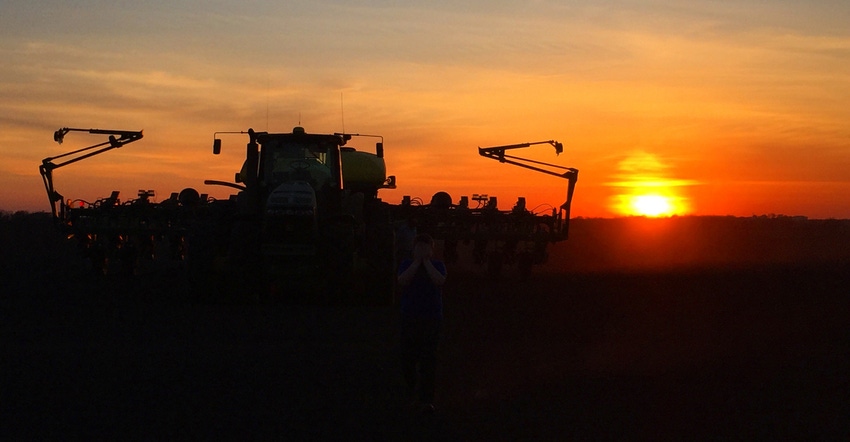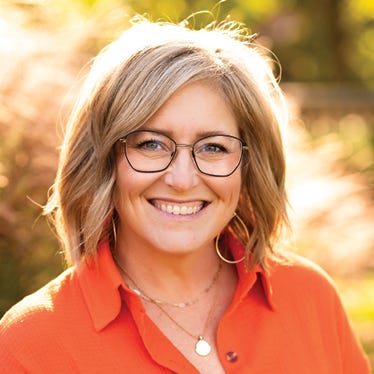
As prevented planting meetings become more prevalent across the Midwest, one lesson has become abundantly clear: Get there early, or you may not get a seat.
Rainfall totals for April and May continue to climb with no end in sight, and Illinois farmers are looking at their meager corn planting rate — 24% as of May 20, compared to 95% last year and 89% over the past five years — and calculating days to maturity, actual production history, fall frost dates, USDA’s new MFP plan and whether prevented planting might actually pay this year.
It’s a tough calculation.
“This week, 70% of the calls I’m getting are not about agronomy. They’re about prevented planting,” says Benton, Ill., farmer and agronomist Kelly Robertson.
What farmers really want to know: If they plant corn June 10, can it still make 160 to 180 bushels? And will they at least yield their APH?
“I can’t answer that question,” Robertson says. “You tell me what the weather’s going to do the rest of the year, and I’ll tell you what the chances are of getting that yield.”
For a lot of farmers, it comes down to knowing their cost of production at $4 corn and being realistic about yield potential on late-planted corn, coupled with the new Market Facilitation Program, which is short on details to date. Plus, they need to understand prevented planting options, which is something a lot of farmers aren’t well versed in.
“Prevented planting feels like failure, and that’s why we don’t understand it,” Robertson says — not to mention that there are conflicting messages coming from multiple sources. “The biggest problem in the countryside is misinformation. That’s why it’s easy to misunderstand what it is and what it might pay.”
Ag economists at the University of Illinois have spent time lately sorting through those options. Here’s a look at what they’ve put together:
Prevented planting decision for corn in the Midwest. Published on farmdoc on May 14, ag economists put this article together to help cover all the considerations farmers need to make in deciding whether to take prevented planting or not. Cover crops can be planted on prevented planting land, but with restrictions on grazing and haying.
“In many cases, taking the prevented planting payments will have higher expected returns than planting,” the authors write. “However, market and policy dynamics this year make forming expectation on alternatives very difficult.”
A few facts to remember:
Prevented planting payments are eligible on plans in the Common Crop insurance (COMBO) policy. These plans include Revenue Protection, RP with the harvest price option, and Yield Protection.
The prevented planting payment for corn is 55% of the guarantee. Farmers had the opportunity to buy-up to a 60% prevented payment factor. Increasing the payment factor will increase the break-even prices.
$43 per acre of costs are incurred on a prevented planting acre.
$470 per acre are costs left to be incurred if corn is planted. The $470 assumes that nitrogen and pesticides have not been applied and fieldwork has not been completed.
Managing when planting is delayed. Published on farmdoc on May 15, this article takes a realistic look at yield expectations. Field trial work at U of I suggests that expected yields are between 80% and 85% of maximum yield when planting occurs in early June. A decline of this nature would be roughly 30 bushels per acre.
Corn price increases and prevented planting. This article was published May 21. As planting delays reach historic levels across the Corn Belt, it’s logical to expect corn prices to increase. Here, economists take a look at the same functions with higher corn prices, to make a better determination of corn planting vs. taking prevented planting. As of May 21, prices had not risen enough to induce farmers to plant corn after the final planting date, if inputs aren’t yet on. And the hitch: Rising prices could reduce Price Loss Coverage payments for 2018.
For most farmers, it’s a matter of circumstance combined with economics — on a field-by-field basis.
Prevented planting decisions will look different for every field, Robertson says. “If you own your own land, it probably pays. If you cash-rent, it may be a wash. If you crop-share, chances are that your landlords don’t have crop insurance, and then you may need to switch to soybeans. That is the problem right now that many face — what to do with crop-share acres.”
At the end of the day, Robertson says you have to get advice from people who know your insurance program and know your situation. Each field has its own APH, which requires a field-by-field calculation.
��“As usual, we have a lot of generalities being talked about and not much specifics,” Robertson says. “Call your crop insurance agent, meet with your crop insurance agent, do math with your crop insurance agent. Don’t rely on the coffee shop to tell you what you’re going to get.”
About the Author(s)
You May Also Like






